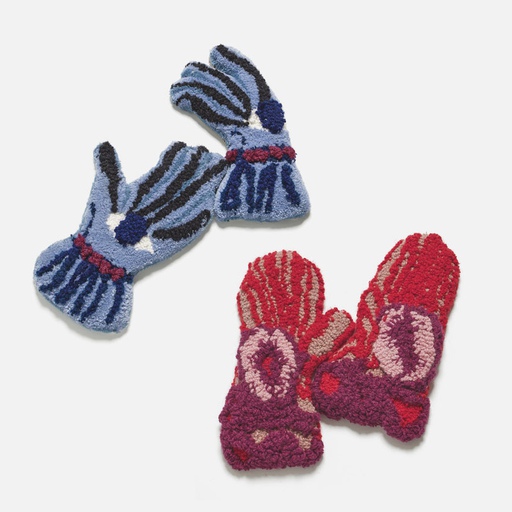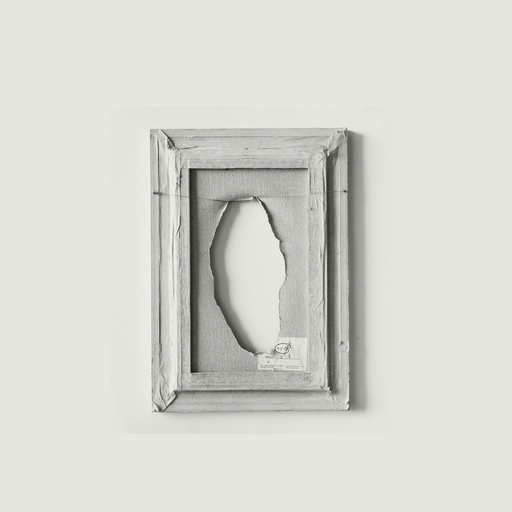The artist Hilary Brace is known for her whimsical, celestial cloudscapes. Recalling the verisimilitude of a photograph, Brace's drawings and prints depict a world rooted as much in reality as in the surreal. The artist's relentless dedication to detail and texture allows her to create a space that is instantly recognizable yet intriguing and illogical. Typically beginning each work without a premeditated plan for its final form, Brace explores the ways in which the imagination can transcend the limits and boundaries of the physical world. We spoke to Brace about the role of the artist as magician and explorer, her spontaneous studio processes, and the way the past keeps redefining the future of art.
What made you want to become an artist?
I remember thinking as early as third grade that I would be an artist. My family visited a lot of museums, so the idea of being an artist was something I was introduced to early. But thinking back now on how focused I was on getting my art projects to be just like I wanted, it seems I had an innate drive to make things, which I suspect most artists have.
You work mostly in drawings. Why did you choose this medium?
The immediacy of drawing just suits me. I like the spontaneity of being able to alter an image at any given moment, without having to slow down and attend to a process like mixing paint. I painted for years, but I found I was just more connected to my imagination and felt freer to explore possibilities when drawing.
What, in your view, makes a work successful?
Magic. When all the elements in any artwork—whether it's visual art, literature, music, dance, or theater—transcend themselves, so that something larger than the sum of its parts becomes present. The greatest test for me is if the magic persists even when I'm wondering about how it was achieved.
Where do you look for inspiration?
Nature.
Your work has often been referenced in relation to the atmospheric qualities found in the work of J.M.W. Turner and the light effects of William Blake. Can you speak about your relationship to these artists and their influence on your practice?
I did look at both Turner and Blake when I was a student. I expected to get something from Blake but didn't. Turner was much more helpful: more true magic.
Your drawings posses a photographic quality; in them, cloudscapes look untouched by human hands. Are your landscapes real or imaginary?
Imaginary. I don't have a pre-conceived idea of what I will make when I begin, so the images are discovered during the process. If I'm working in charcoal, the small drawings begin with a completely darkened surface and I remove the charcoal to reveal light areas. The images develop somewhat like a view through a foggy lens that becomes sharper as the elements suggest themselves and then come into focus. For studies for large drawings or print images, I collage tiny bits of photos, drawings and other references together in Photoshop. Then I use the drawing tools to join the bits, once I begin to imagine a composition. It's more of a building process, but like the drawings, the print images evolve in unexpected ways.
How has your work changed over the course of your career?
I've been exploring otherworldly landscapes, mainly through drawing, for about 25 years, so there haven't been radical changes in my work. But wanting to know more about these strange places has gradually made my imagery and my technique more specific. Even though I'm still chasing for the sublime through imagery that I find mysterious or powerful, making these near-impossible events seem believable has become increasingly important to me. But I want to make places that surprise me, so they continue to elude me and the work stays mysterious despite its heightened realism.
What materials are indispensable in your studio?
I never would have predicted it, but my computer, for exploring compositions, along with my little bowl of powdered charcoal, a kneaded eraser, and a giant box of Q-tips.
What artwork or art destination would you most like to see?
Many. Any! I'd like to travel more. I'd like to go to Rome for the opportunity to see great art and architecture in such a layered and sometimes dark historical context. I love living in the western U.S., where nature is so dominant, but it's always good to be reminded about what people have endured in order to accomplish what we appreciate today.
What do you think the artist's role is in society? Do you think artists have a social responsibility?
Artists have a responsibility to find their own true voice, then, if they can, make something undeniable. The social impact of art is hard to measure and there are all sorts of ways for artists, as people, to be effective socially. Art is wonderful because it can affect or move us in myriad ways, so making art that responds to our rich history or our complexity as human beings makes as much sense to me as making art that directly addresses current social issues. In my own work, my imagery is certainly influenced by my concern about climate change and environmental issues. But I'm interested creating something that reminds us, in a visceral way, of our relationship with nature, our vulnerability and the infinite beauty that we risk losing.
Is there any other art-historical period that you wish you could have lived through?
No. It would have been too hard to be a woman at any other time in history.
If you weren't an artist, what would you be doing?
Something that allowed for endless curiosity and creative solutions to complex problems without anybody else getting in my way—that compulsion makes it hard to imagine doing something else! But if I had great clients I'd be happy designing gardens. It's a lot like painting, and I'm a plant fiend. I've spent most of my spare time developing my garden.
Who is your favorite artist?
Vermeer bubbles to the top of many favorites.
What is your favorite art space?
The Met. I can spend days there when I visit New York, looking at all of it from everywhere—all that magic.
Meet the ArtistHilary Brace
























